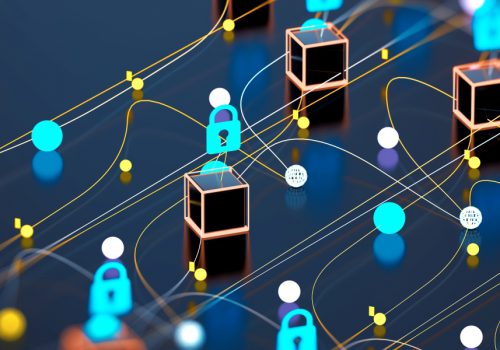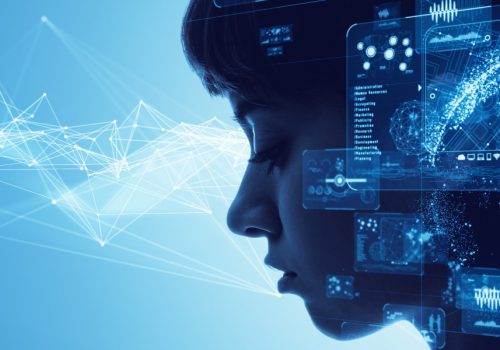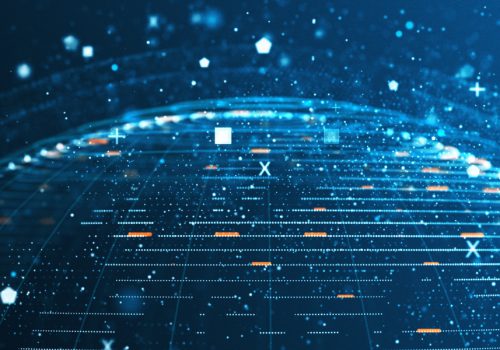In this digital era, technology has seamlessly interwoven itself into the very fabric of our daily lives, amplifying the paramount importance of cyber resilience. As technological advancements revolutionize our modes of living, working, and communication, the onus falls on both organizations and individuals to grasp how critical it is to be prepared to address and rebound from cyber threats. The ramifications of cyber-attacks can be overwhelming, necessitating a culture of preparedness and resilience in the face of these invisible and often unexpected assailants.
This article delves into the profound significance of cyber resilience within the swiftly transforming technological panorama of our time. It pays particular attention to emerging technologies, such as Artificial Intelligence (AI), which presents both immense potential and formidable risks. Furthermore, it illuminates key strategies that organizations and individuals can implement to foster a cyber-resilient environment. As we continue to traverse this increasingly digitized world, the development of robust cyber resilience becomes mission-critical to our shared security and prosperity.
The Evolving Cyber Threat Landscape
As technology relentlessly progresses, it simultaneously paves the way for an escalating sophistication and frequency of cyber threats. The gamut of these threats ranges from seemingly simplistic malware attacks to intricately orchestrated ransomware incidents, and even extends to state-sponsored hacking. These cyber-attacks have the potential to wreak havoc, ushering in catastrophic consequences that can disrupt business continuity, mar reputations, and lead to substantial financial losses.
Organizations, irrespective of their size or industry, find themselves ensnared in this vast web of cyber threats. This vulnerability makes the prioritization of cyber resilience no longer a luxury but a mandatory shield of defense.
It underlines the urgency for businesses to adopt proactive strategies, bolstering their capacity to endure and swiftly recuperate from cyber threats. It is only through a robust and dynamic approach to cyber resilience that organizations can hope to navigate this turbulent landscape of cyber threats successfully.

The Impact of Technological Advancements
The continuous march of technological advancements has ushered in a new era of possibilities, fundamentally transforming our lifestyles and professional landscapes.
Among these advancements, emerging technologies, such as artificial intelligence (AI) have emerged as game-changers. With their ability to automate processes, analyze vast amounts of data, and make informed decisions, AI-powered systems have found their way into various industries. However, it is important to recognize that alongside these revolutionary capabilities, technological advancements also introduce novel risks and vulnerabilities. This necessitates a concerted effort by organizations to bolster their cyber resilience, effectively navigating the evolving landscape of potential threats and ensuring the security of their digital infrastructures.
As AI and other technological innovations become increasingly integrated into our daily operations, organizations must proactively address the vulnerabilities that arise in their wake. The reliance on AI-powered systems introduces unique cybersecurity challenges that demand specialized attention. While AI holds promise in fortifying security measures and detecting threats, it can also be exploited by malicious actors. Consequently, organizations must invest in AI-specific cybersecurity measures to safeguard the integrity and trustworthiness of AI systems.
This encompasses secure AI development practices, rigorous data integrity verification, algorithm validation techniques, and the continuous monitoring of AI systems to detect and respond to adversarial attacks. By adopting these measures, organizations can simultaneously leverage the potential of AI while bolstering their cyber resilience and mitigating the risks associated with this transformative technology.
Mitigating AI-Specific Threats
Artificial intelligence stands as a beacon of transformative potential in numerous industries, poised to revolutionize our lives. Yet, as AI becomes increasingly integrated into our systems, it brings along a wave of new risks and challenges. The ethical and responsible development and deployment of AI have become central to maintaining cyber resilience in this era of technological advancements.
Ethical AI encompasses principles and practices that prioritize fairness, transparency, and accountability. The potential biases and risks associated with AI algorithms, along with the possibility of malicious actors’ exploiting AI systems, necessitate a strong governance framework promoting responsible AI practices.
It is essential for cyber resilience that AI algorithms be transparent and explainable. Organizations need to strive for transparent AI systems, enabling users to understand how decisions are made and allowing for accountability and auditability.
Techniques, such as explainable AI and algorithm validation, can illuminate the decision-making process of AI systems, establishing trust and reliance among users and stakeholders.
The security and integrity of AI systems are equally critical. The rise of adversarial machine learning, a field that investigates how AI systems can be defended against antagonistic attacks, illustrates the growing importance of this facet of AI in cybersecurity. By utilizing AI to identify and address vulnerabilities in AI systems, organizations can enhance cyber resilience and ensure AI remains a trusted tool.
While striving for secure AI systems is essential, it is critical not to lose sight of the need for innovation. Overregulation or excessive restrictions may stifle AI development and obstruct its potential benefits. Therefore, organizations should approach AI governance with a nuanced perspective, considering both the security imperatives and the need to nurture innovation. Striking this delicate balance is crucial for building a cyber-resilient environment that harnesses the full potential of AI while mitigating its risks.

Decentralized Technologies: Empowering Individuals and Reducing Risks
In our current digital landscape, one of the significant vulnerabilities lies in the centralized control and storage of data. Centralized systems, such as social media platforms and cloud storage, harbor vast amounts of sensitive information in a single location, making them attractive targets for cyber threats. The damages inflicted by a successful breach of such a system can be colossal and far-reaching as well.
Decentralized technologies present an alternative route that spreads data and control across a network of interconnected nodes. This approach eliminates the single point of failure and affords individuals greater control over their own data. Decentralized technologies, such as blockchain, decentralized identifiers (DIDs), and selfsovereign identity (SSI), allow users to manage and control their digital identities, enabling them to selectively share personal information while retaining privacy and security.
By leveraging decentralized technologies, organizations can boost their cyber resilience by minimizing the potential impact of a breach and reducing the loss of sensitive data. Additionally, this model promotes a more inclusive and democratic digital ecosystem, challenging existing power dynamics and paving the way for a more equitable and transparent digital future.
Securing IoT Devices
The Internet of Things (IoT) has proliferated in recent years, connecting various devices and systems, expanding the attack surface for cybercriminals. Weakly secured IoT devices can be compromised to gain unauthorized access to networks or launch attacks. Organizations should prioritize the implementation of robust security measures, such as strong authentication, encryption, regular firmware updates, as well as behavior-based anomaly detection systems, to secure IoT devices and ensure their integration within a cyber-resilient infrastructure.
Furthermore, organizations should consider adopting decentralized and distributed models for IoT networks to minimize single points of failure and enhance overall security.
In addition to traditional security measures, organizations can leverage the concept of “security by design” for IoT devices. This involves integrating security features into the design and development process of IoT devices from the outset, rather than as an afterthought. By considering security as a core component of IoT device design, organizations can enhance cyber resilience and reduce the risk of vulnerabilities.
Protecting Cloud Infrastructure
Cloud computing has revolutionized data storage and processing, offering scalability, cost-efficiency, and accessibility. However, organizations must adopt robust security measures to protect sensitive data stored in the cloud. Implementing strong access controls, encryption, regular vulnerability assessments, continuous monitoring, and utilizing cloud-native security services are crucial to maintaining cyber resilience in cloud environments.
Furthermore, organizations should explore the potential of hybrid cloud architectures and consider using multiple cloud service providers to diversify risks and minimize the impact of a potential breach.
Another strategy to enhance the security of cloud infrastructure is the adoption of a “zero-trust” approach.
In a zero-trust model, all network traffic, regardless of its source or destination, is treated as potentially malicious. This approach relies on continuous verification of users, devices, and applications before granting access to resources. By adopting a zero-trust framework, organizations can bolster their cyber resilience by reducing the risk of unauthorized access and lateral movement within cloud environments.
Understanding Cyber Resilience
Cyber resilience refers to an organization’s ability to withstand, adapt, and recover from cyber-attacks while continuing to operate effectively. It encompasses a proactive and comprehensive approach to security, focusing not only on preventing attacks but also on detecting, responding, and recovering from them.
The Importance of Cyber Resilience
- Mitigating Financial Losses
Cyber-attacks can have severe financial implications for organizations, including loss of revenue, damage to infrastructure, legal fines, and lawsuits. A cyberresilient organization is better equipped to identify, minimize, and recover from financial losses caused by cyber incidents. By investing in cybersecurity measures and incident response capabilities, organizations can minimize the impact of attacks and expedite recovery. Organizations should consider cyber insurance as a means of mitigating financial losses in the event of a significant cyber incident. - Safeguarding Reputation
A single cyber incident can tarnish an organization’s reputation, eroding customer trust and loyalty. Cyber resilience involves implementing security measures and response plans to protect sensitive data, ensuring the organization’s reputation remains intact even in the face of a cyberattack. Timely and transparent communication with stakeholders during and after a cyber incident is essential to maintaining trust and credibility. Organizations should also consider engaging in threat intelligence sharing and collaborating with industry peers to collectively combat cyber threats and enhance their reputation as responsible custodians of data. - Ensuring Business Continuity
Cyber resilience enables organizations to maintain critical operations during and after a cyber-attack. By implementing robust backup and recovery processes, organizations can minimize downtime and ensure uninterrupted services to their customers. Additionally, implementing business continuity plans that include cyber incident response procedures helps organizations quickly recover from disruptions and resume operations smoothly. Organizations should adopt a proactive stance towards resilience by conducting regular testing and simulation exercises to validate their continuity plans and identify areas for improvement. - Meeting Regulatory Requirements
Many industries are subject to stringent cybersecurity regulations. Achieving cyber resilience helps organizations comply with these regulations, reducing the risk of penalties and legal consequences. By implementing security controls, regularly monitoring and reporting on cybersecurity incidents, and conducting audits, organizations demonstrate their commitment to regulatory compliance and build trust with regulators. Organizations should actively stay informed about evolving regulatory requirements, engage with relevant industry bodies and forums, and leverage emerging technologies such as blockchain for transparent and auditable compliance mechanisms. - Protecting Customer Data
In an era where data privacy is paramount, cyber resilience is crucial for safeguarding customer information. Organizations must prioritize the protection of personal and sensitive data to maintain customer trust and comply with data protection regulations such as GDPR (General Data Protection Regulation). Implementing robust data security measures, encryption, access controls, and privacyenhancing technologies help protect customer data from unauthorized access and breaches. Organizations should also consider adopting privacyby- design principles and exploring emerging technologies such as homomorphic encryption to protect sensitive data while enabling secure data analysis and processing.

Strategies for Building Cyber Resilience
- Risk Assessment and Management
Conduct regular risk assessments to identify vulnerabilities, evaluate potential threats, and prioritize security investments. Implement risk management processes to mitigate identified risks effectively. Organizations should adopt a comprehensive and integrated risk management approach that considers technological, operational, and human factors. This may involve leveraging advanced risk assessment tools that incorporate AI and machine learning algorithms to analyze vast amounts of data, identify patterns, and detect emerging threats. - Security Awareness and Training
Develop a culture of cybersecurity awareness among employees through regular training programs. Educate staff about common cyber threats, phishing attacks, AI-specific threats, and best practices for secure computing. Include specific training modules on the risks and vulnerabilities associated with emerging technologies to ensure a comprehensive understanding among employees. Organizations should consider leveraging interactive and immersive training methods, such as gamification and simulations, to enhance employee engagement and knowledge retention. - Robust Incident Response Plan
Establish a well-defined incident response plan that outlines roles, responsibilities, and communication channels during a cyber incident. Regularly test and update the plan to ensure it remains effective. Incorporate AI-driven threat intelligence and response systems that can detect and respond to attacks in real time, enhancing the organization’s ability to quickly mitigate the impact of cyber incidents. Organizations should also establish incident response partnerships with external cybersecurity experts and law enforcement agencies to augment their response capabilities and facilitate forensic investigations. - Backup and Recovery
Implement regular data backups and test restoration processes to ensure that critical systems and data can be recovered in the event of an attack. Consider offsite or cloud-based backups for added redundancy. AIpowered backup and recovery systems can automate data backup, streamline recovery processes, and enhance the overall efficiency and reliability of the backup strategy. Additionally, organizations should explore the potential of distributed ledger technologies such as blockchain to ensure the integrity and immutability of backup data, providing an added layer of resilience. - Secure Configuration and Patch Management
Keep software and systems up-to-date with the latest security patches. Implement secure configuration standards to reduce vulnerabilities and ensure that systems are hardened against potential threats. AIenabled vulnerability management tools can automate the identification of vulnerabilities, prioritize patching, and proactively address potential security gaps. Organizations should also consider adopting a zero trust approach where access controls are continuously evaluated and verified, and principles of least privilege are applied, limiting access only to necessary resources. - Third-Party Risk Management
Assess and monitor cybersecurity practices of thirdparty vendors and suppliers to minimize the risk of supply chain attacks. Establish clear security requirements and contractual obligations for partners. Utilize AI-driven vendor risk assessment tools that can analyze vast amounts of data, assess supplier security posture, and provide ongoing monitoring and alerts for potential risks. Additionally, organizations should explore the use of secure multiparty computation (MPC) techniques to securely collaborate and share sensitive data with trusted partners while minimizing the risk of data breaches or unauthorized access.
Conclusion
In the era of technological advancements, organizations must recognize the importance of cyber resilience to effectively mitigate cyber threats and protect critical assets. By addressing the cybersecurity challenges introduced by emerging technologies, such as AI, securing IoT devices, and protecting cloud infrastructure, organizations can enhance their overall cyber resilience. Implementing strategies, such as proactive risk assessments, security awareness training, incident response planning, backup and recovery processes, secure configuration, and thirdparty risk management, are vital steps towards building a cyber-resilient environment that can adapt and thrive amidst evolving cyber threats.
In fostering creative thinking, it is essential to challenge conventional beliefs and explore alternative approaches to cyber resilience. Organizations should consider embracing decentralized technologies, such as decentralized identifiers (DIDs) and self-sovereign identity (SSI) to enhance privacy, reduce reliance on centralized systems, and empower individuals to control their own digital identities. Furthermore, the adoption of advanced AI techniques such as adversarial machine learning and AIpowered anomaly detection can help organizations stay ahead of emerging cyber threats and proactively identify novel attack vectors.
As the cyber threat landscape continues to evolve, organizations must foster a culture of continuous learning and adaptation. This includes embracing interdisciplinary collaboration, engaging with cybersecurity communities and research institutions, and actively participating in information sharing and threat intelligence initiatives.
By nurturing a proactive mindset and embracing innovative technologies and strategies, organizations can build a cyber-resilient foundation capable of navigating the complex and ever-changing cyber landscape.









